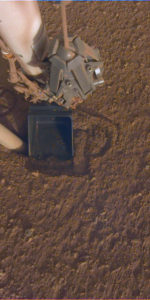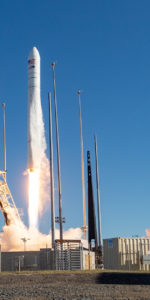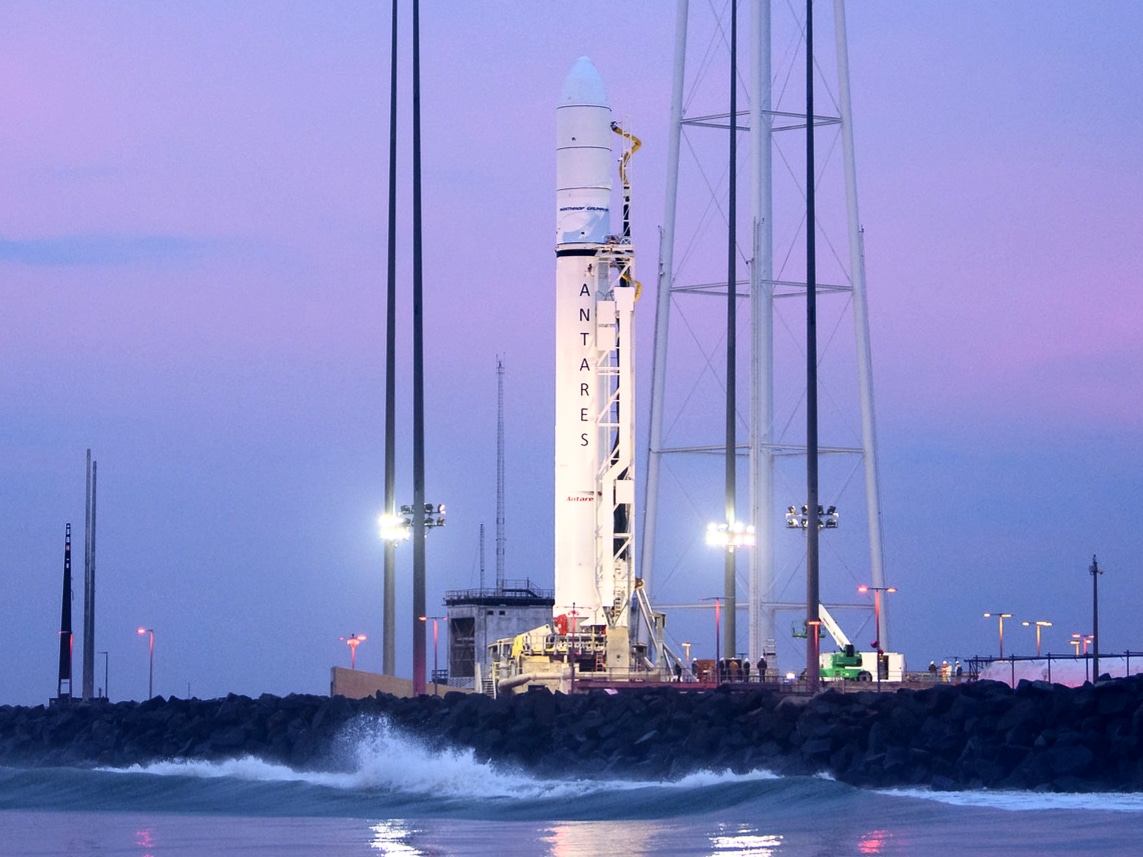
Even as its NG-11 spacecraft continues to circle the Earth, Northrop Grumman Corp. stands primed to launch a second Cygnus cargo mission of 2019 to the International Space Station (ISS) on Saturday, 2 November. Liftoff of the first Antares 230+ booster—a never-before-used variant of the rocket, which boasts structural improvements and better payload-to-orbit capability—is due to occur at 9:59 a.m. EDT from Pad 0A at the Mid-Atlantic Regional Spaceport (MARS) on Wallops Island, Va.
Follow updates and watch LIVE COVERAGE of the launch on Nov 2!
In keeping with tradition, the NG-12 mission honors an individual who made a significant impact on the aerospace industry; in this case, former Moonwalker Alan Bean, who died last year. He becomes the third veteran lunar explorer to be so recognized and his honor is timely, as November marks 50 years since Bean and his Apollo 12 crewmates Charles “Pete” Conrad and Dick Gordon completed humanity’s second piloted landing on the Moon.
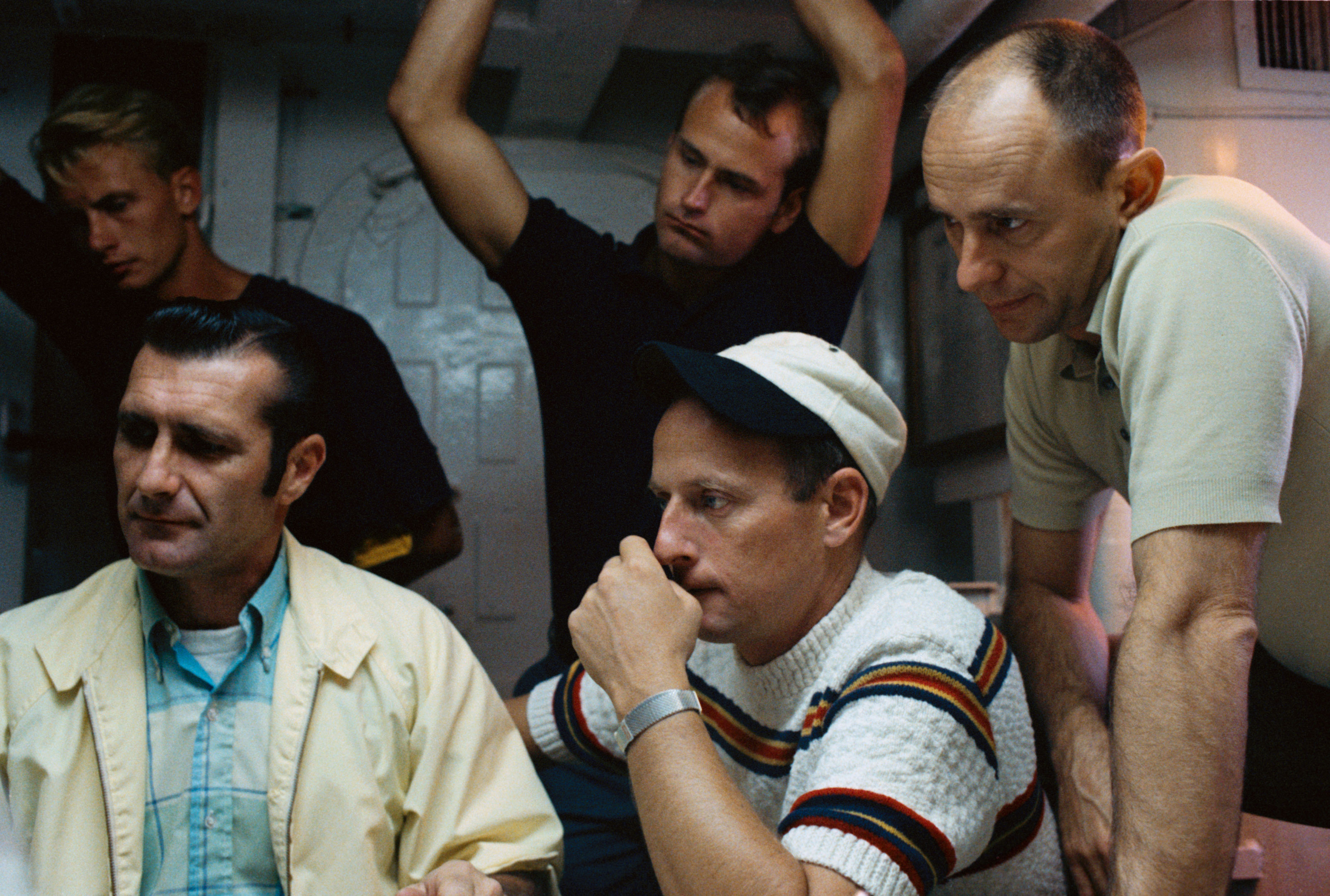
Bean was born in Wheeler, Texas, on 15 March 1932, the son of a Soil Conservation Service father and an ice-cream-shop-owning mother. A keen athlete in his youth, he earned a degree in aeronautical engineering from the University of Texas at Austin in 1955, then entered the Navy for initial flight instruction. He was assigned to a jet attack squadron, based at Naval Air Station (NAS) Jacksonville, Fla. In the evenings, he took night classes in painting in oils, fulfilling a personal love of art which would stay with him throughout his life. In fact, to interviewers he would always describe himself as “an artist, creating paintings that record for future generations mankind’s first exploration of another world”.
Nicknamed “Sarsaparilla” at NAS Jacksonville for his teetotalism, Bean entered the Navy’s test pilot at Patuxent River, Md., where he met an instructor who would change his life: Charles “Pete” Conrad. Although Conrad became a NASA astronaut in 1962, Bean and fellow naval aviator Dick Gordon would have to wait another year before they were themselves selected into the world’s most elite flying fraternity. Bean was named as backup command pilot for Gemini X—the first member of his astronaut class to draw a command assignment, albeit in a backup capacity—and was teamed with Clifton “C.C.” Williams, another individual who would play a significant role in his fortunes. Williams was expected to serve as Lunar Module Pilot (LMP) on Apollo 12, alongside Conrad and Gordon, but was tragically killed in an aircraft crash. Bean was requested by Conrad as Williams’ replacement. And in November 1969, Conrad, Gordon and Bean traveled to the Moon together. During his time on the lunar surface, Bean performed two Moonwalks and logged a total of 7.5 hours on the lunar surface.
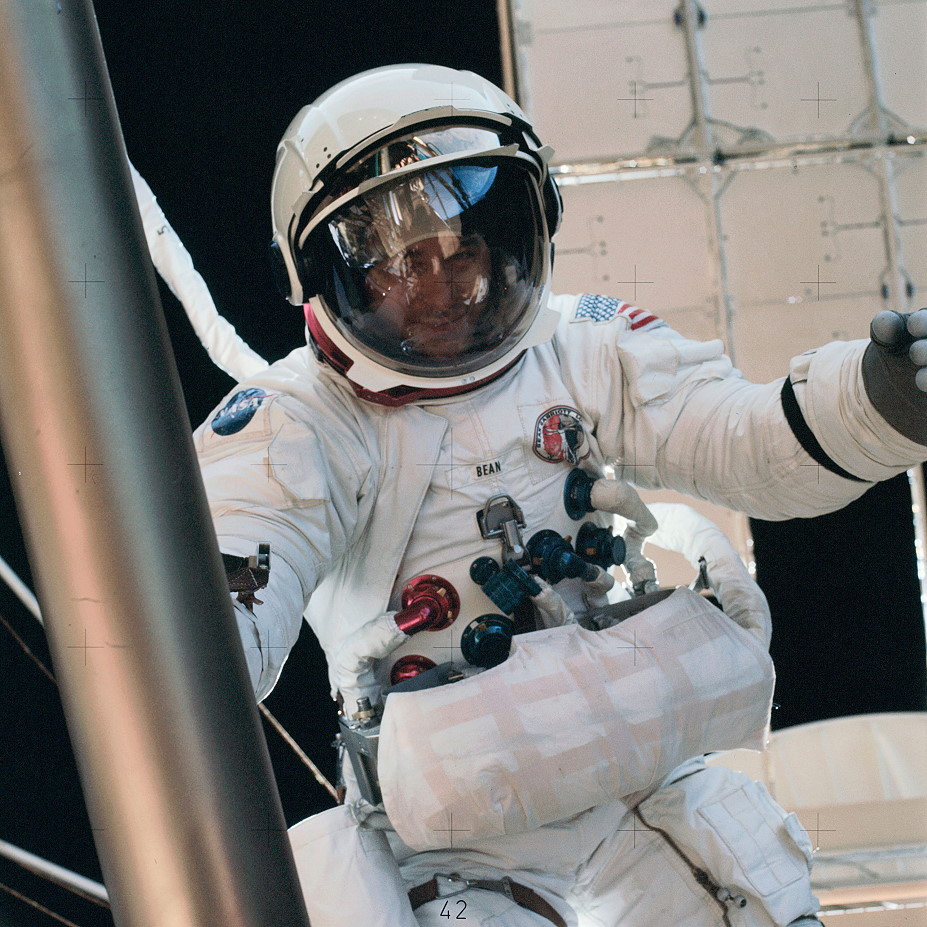
By 1972, Bean had been assigned to command the second long-duration crew aboard America’s Skylab space station. Launched in July 1973, Bean and crewmates Owen Garriott and Jack Lousma spent 59 days in orbit—the longest single space mission ever undertaken at that time—and performed a multitude of scientific investigations, although problems with the thrusters on their Command and Service Module (CSM) almost precipitated the first in-flight rescue of an astronaut crew. Bean performed one spacewalk outside Skylab, lasting just under three hours, which brought his Extravehicular Activity (EVA) career total to more than ten hours in vacuum. Returning to Earth in September 1973, Bean served as backup commander for the U.S. half of the 1975 Apollo-Soyuz Test Project (ASTP). He was deputy chief of the astronaut corps, before leaving NASA in 1981 to pursue painting full-time. His artwork expressed the story of the Apollo program and his own time on the Moon and Bean always added a few finishing touches to each piece: a smear of real lunar dust, salvaged from his own space suit patches, or a print made by a real lunar boot or a scratch or groove from an Apollo geological hammer or core-tube sampler. The man who once described himself as “an artist, creating paintings that record for future generations mankind’s first exploration of another world” passed away in May 2018, aged 86.
Bean joins a cadre of other giants of the aerospace industry to have been honored with Cygnus names; a tradition which began with the spacecraft’s original builder, Orbital Sciences Corp., which merged with Alliant TechSystems to become Orbital ATK, Inc., in 2014 and was eventually purchased by Northrop Grumman Corp. in 2018 in its present incarnation as Northrop Grumman Innovation Systems (NGIS). All but one of the Cygnuses have been named for deceased spacefarers, with Moonwalkers Gene Cernan, John Young and now Al Bean memorialized, as well as double recognition for “Original Seven” Project Mercury astronaut Deke Slayton. And with NG-12 slated to remain attached to the ISS from November through January 2020, it is fitting that the mechanized “Space Ship Alan Bean” will be on-orbit for the 50th anniversary of his first flight on Apollo 12.
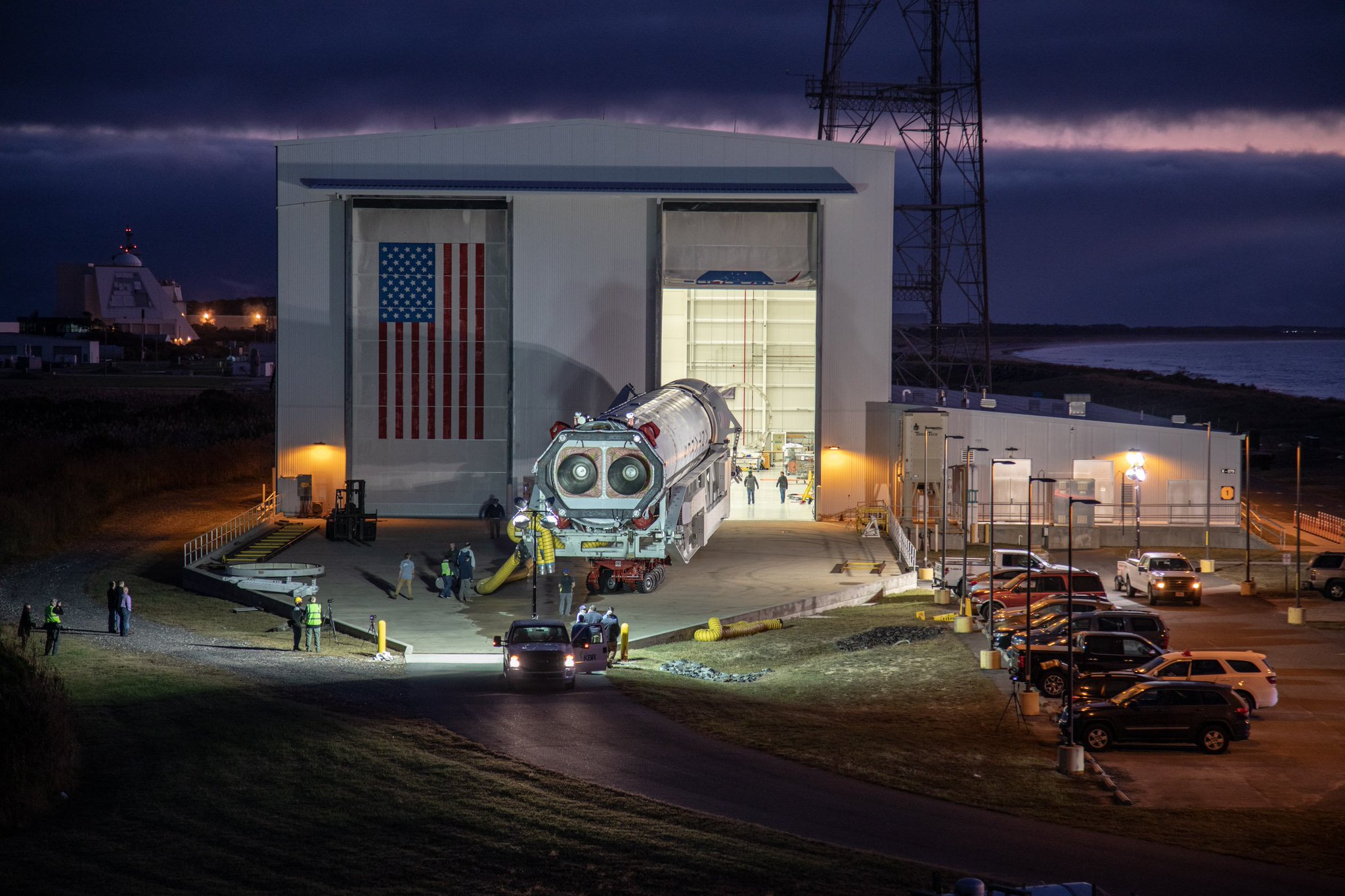
Launched on 12 occasions since September 2013, with one catastrophic in-flight failure five years ago, Cygnus has provided critical ISS cargo delivery capabilities, along with its Commercial Resupply Services (CRS) partner SpaceX, for most of the last decade. The original $1.9 billion contract for the initial CRS1 phase was signed between Orbital Sciences Corp. and NASA in December 2008 and required the delivery of 44,000 pounds (20,000 kg) of payloads and supplies aboard eight Cygnus cargo ships.
However, with the increased uplift afforded by a pair of Atlas V-launched Cygnuses in December 2015 and March 2016—together with the larger payload envelope of the “Enhanced Cygnus”—this target was surpassed by the seventh mission. In August 2015, Space News reported that two additional Cygnus flights had been contracted; together with the already-baselined eighth mission, these formed an “extension” program to bridge the gap between the end of CRS1 and the start of an expected follow-on CRS2 contract.
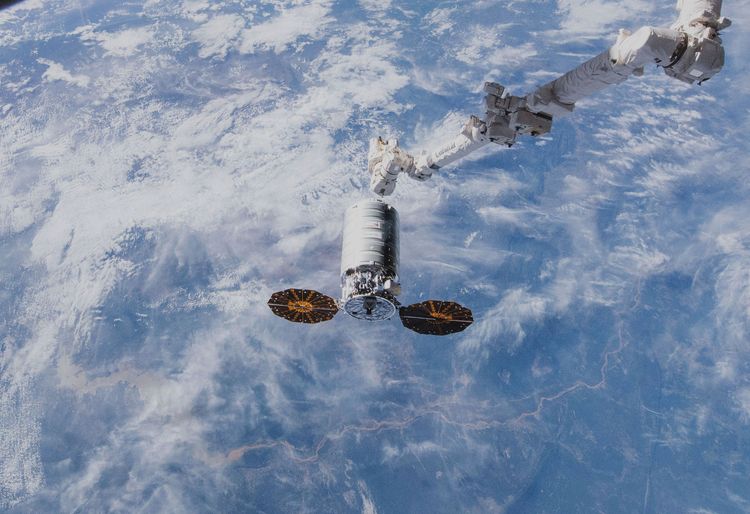
In January 2016, Orbital ATK won a share of the CRS2 contract, which will run from 2019-2024, alongside partners SpaceX and Sierra Nevada Corp. (SNC). With SpaceX’s Dragon not slated to begin its CRS2 missions until next year and SNC’s Dream Chaser anticipating a maiden flight in 2021, Northrop Grumman Corp. will thus be the first of the partners to kick off its second-phase CRS commitment.
Among the research payloads aboard NG-12 are a Made-in-Space Recycler to test mechanisms for processing plastics into 3D printing filaments for transfer to the station’s 3D printer and a zero-gravity oven to examine the practicalities of baking food in microgravity, which may have psychological and physiological benefits for crew members on long-duration deep-space missions. The AstroRad experiment will provide an experimental ‘vest’ to be worn by female crew members—on account of their heightened radiation-induced cancer risk to ovaries and breast tissue—in order to mitigate the effects of unpredictable solar-particle events.
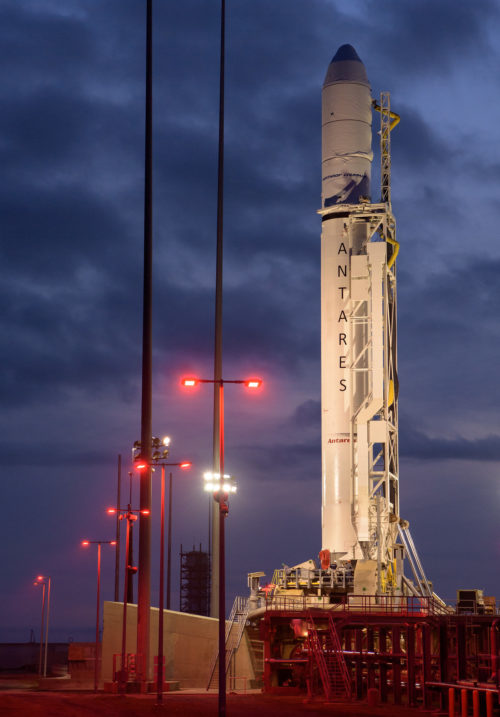
Additionally, NG-12 carries tools and equipment in support of the replacement of the degraded Tracker Thermal Control System (TTCS) on the Alpha Magnetic Spectrometer (AMS)-2. In the November-December timeframe, Expedition 61 astronauts Luca Parmitano and Drew Morgan will perform five spacewalks to support this work.
The particle physics experiment launched in 2011 with a 3-year expected lifespan. It was never designed to be serviced, so it was not designed with tools in mind, nor are there handrails or foot restraints. Astronauts have never cut and reconnected fluid lines during a spacewalk either, so scientists and engineers from around the world have been tackling the challenges for four years to prepare for and train the astronauts for the upcoming spacewalks.
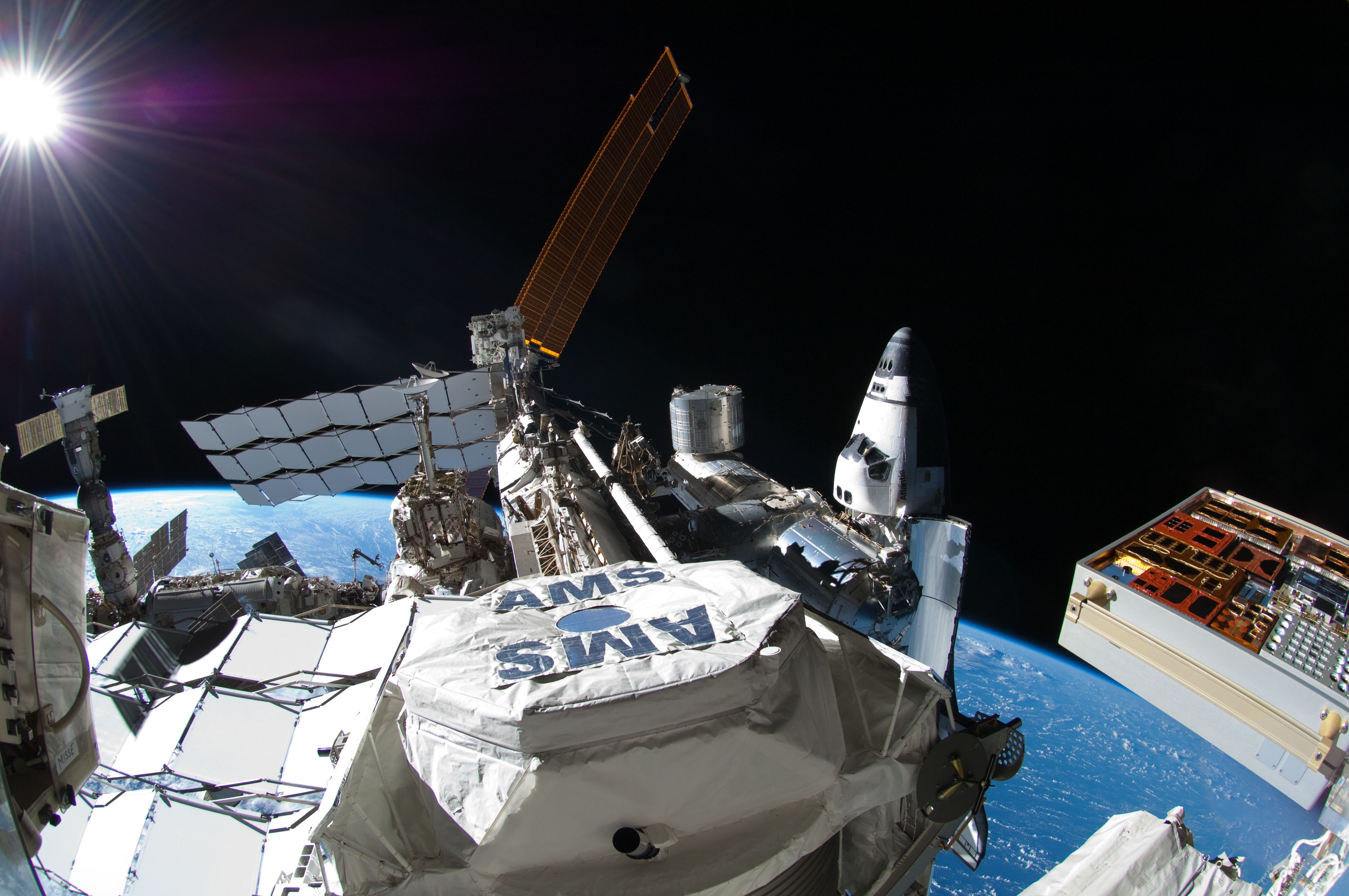
Credits: NASA
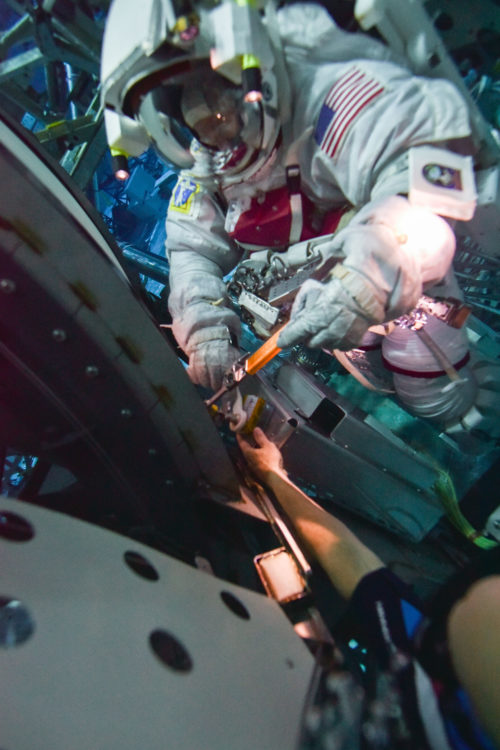
Credits: NASA
“They’ll be removing debris shielding, installing handrails, hooking up power and data connections for the new external pump system and cutting and rerouting coolant lines inside AMS itself,” NASA’s Dan Huot told AmericaSpace.
He noted that the tools went uphill on last month’s H-II Transfer Vehicle (HTV)-8, as well as the NG-12 Cygnus. These tools include handrails for Parmitano and Morgan—since AMS-2 was never designed to be fixed—together with vise grips, capture tools for pieces to be removed from the spectrometer and a handling aid for removing the debris shield.
“Exact dates aren’t set in stone yet for the EVAs,” Mr. Huot told us, “but will likely take place several weeks after NG-12 arrives to accommodate any time-sensitive science arriving on the cargo craft.”
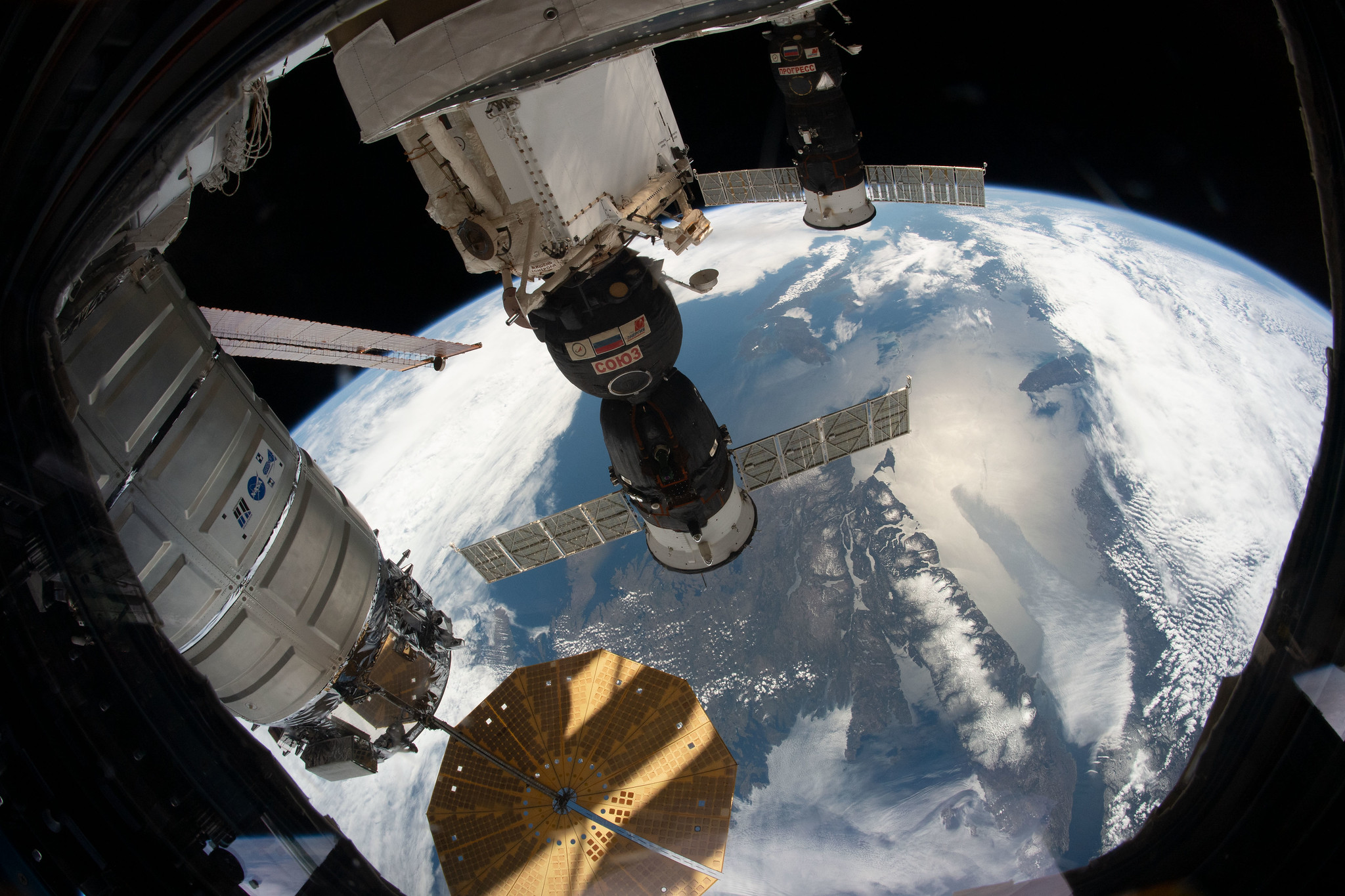
Assuming it launches successfully on Saturday, NG-12 will also mark a unique occasion for as many as two Cygnuses to be in space simultaneously. The NG-11 spacecraft, which roared to orbit last April, unberthed from the ISS in August, but has since been flying independently to complete a multi-month “secondary mission”, which involves the deployment of several CubeSats via the Slingshot CubeSat Deployer System and the NanoRacks external CubeSat deployer. NG-11 is due to re-enter the atmosphere to destruction in December. According to Northrop Grumman Corp., the extended flight demonstrates the “capability to fly two Cygnus vehicles simultaneously and support hosted payloads for longer periods of time”, as well as reinforcing the spacecraft’s ability “to serve a robust and growing commercial economy in low-Earth orbit”.
Following liftoff, NG-12 will spend two days in transit, before it is captured by the station’s 57.7-foot-long (17.6-meter) Canadarm2 early Monday, 4 November. At the controls of the robotic arm will be Expedition 61 astronaut Jessica Meir, backed-up in the multi-windowed cupola by crewmate Christina Koch, only two weeks after the duo completed their historic all-female spacewalk together. After Meir has grappled Cygnus, ground controllers will remotely command the arm to berth the spacecraft at the Earth-facing (or “nadir”) port of the Unity node, where it will remain through its departure and re-entry in January 2020. All told, NG-12 carries the largest haul of payloads ever delivered by a Cygnus, totaling 8,200 pounds (3,720 kg).
.
.
FOLLOW AmericaSpace on Facebook and Twitter!
.
.
Missions » ISS » COTS » CYGNUS »



